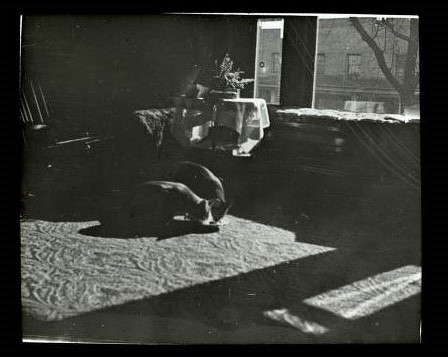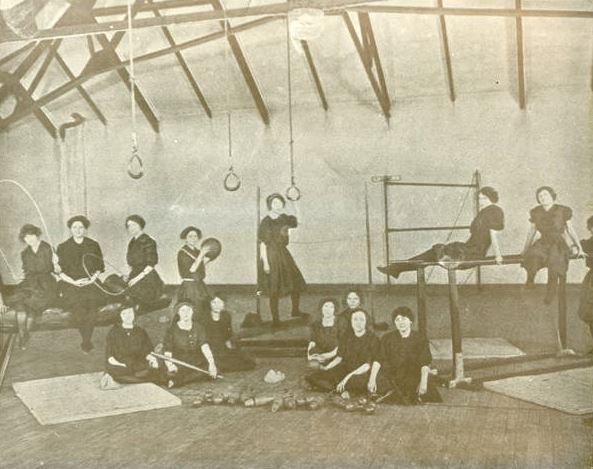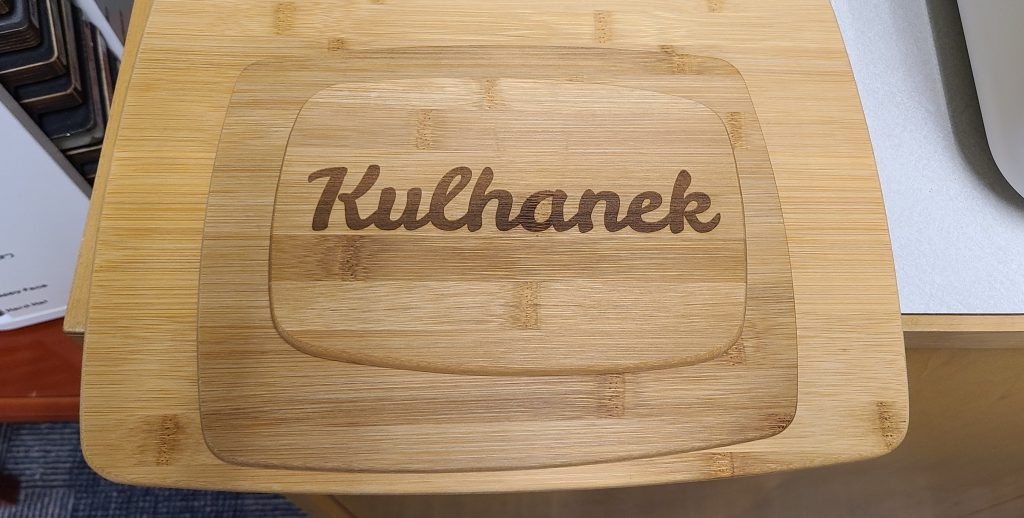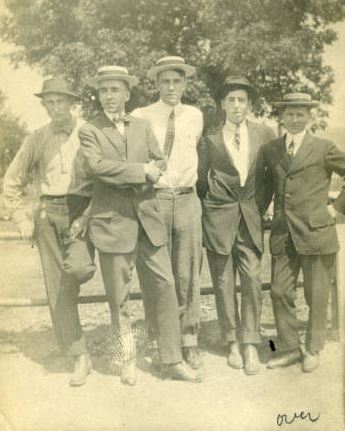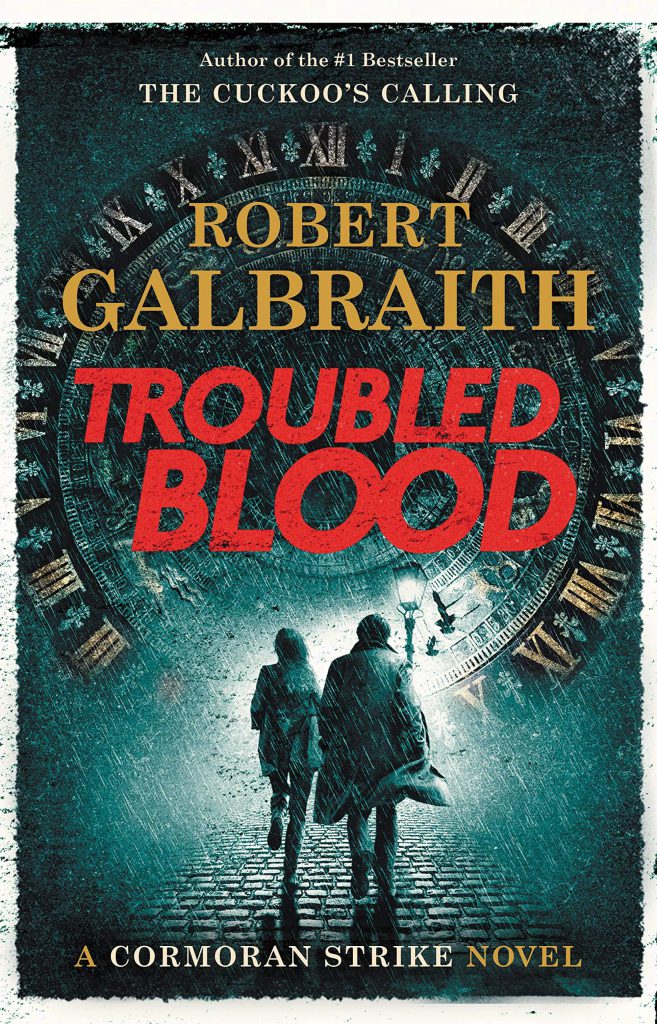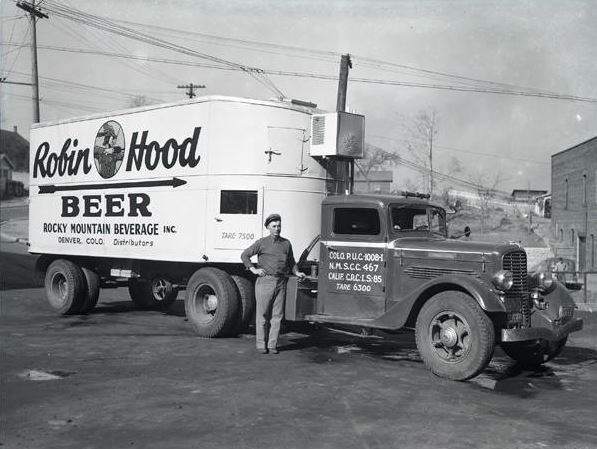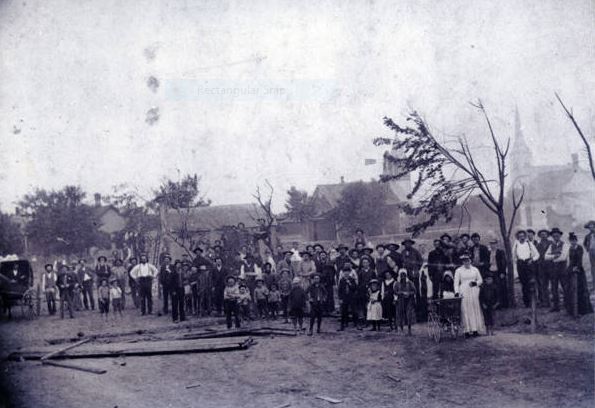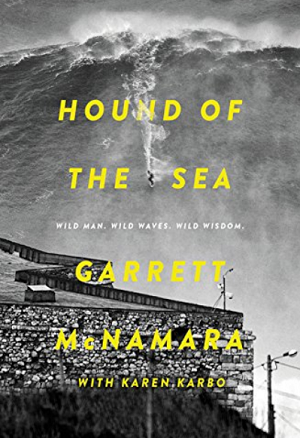Search the Blog
Categories
- Books & Reading
- Broadband Buzz
- Census
- Education & Training
- Friday Reads
- General
- Grants
- Information Resources
- Library Management
- Nebraska Center for the Book
- Nebraska Libraries on the Web
- Nebraska Memories
- Now hiring @ your library
- Preservation
- Pretty Sweet Tech
- Programming
- Public Library Boards of Trustees
- Public Relations
- Talking Book & Braille Service (TBBS)
- Technology
- Uncategorized
- What's Up Doc / Govdocs
- Youth Services
Archives
Subscribe
Category Archives: General
Throwback Thursday: Cats in the Library
This week’s #ThrowbackThursday is just purr-fect!
This week, we have a black and white lantern slide featuring William Wallace’s cats, Nicholas and Deborah! The two cats are seen in the library of the Wallace residence licking from a bowl on the floor.
This photo was created by William Wallace. He was a vice president of Omaha National Bank, as well as the president of the Omaha Library Board. This image is published and owned by Omaha Public Library. The items from Omaha Public Library featured on the Nebraska Memories archive include early Omaha-related maps dating from 1825 to 1922, as well as over 1,100 postcards and photographs of the Omaha area.
Do you like history? Check out the Nebraska Memories archive for historic materials related to the state of Nebraska!
Nebraska Memories is a cooperative project to digitize Nebraska-related historical and cultural heritage materials and make them available to researchers of all ages via the Internet. The Nebraska Memories archive is brought to you by the Nebraska Library Commission. If your institution is interested in participating in Nebraska Memories, see http://nlc.nebraska.gov/nebraskamemories/participation.aspx for more information.
#BookFaceFriday “Not Here to Be Liked” by Michelle Quach
We’re not taking this #BookFaceFriday lying down!
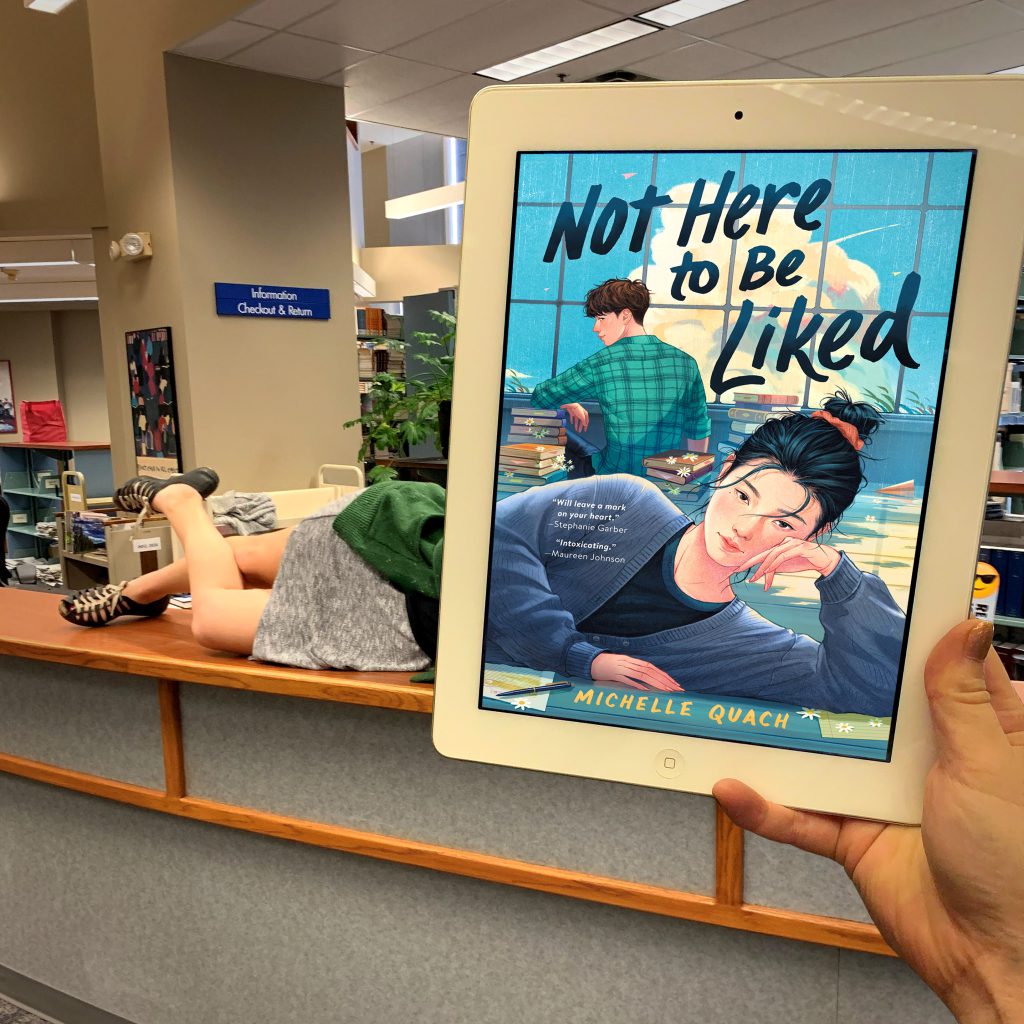
Just another relaxing #BookFaceFriday at the library commission! We hope you’ll like “Not Here to Be Liked” by Michelle Quach (HarperCollins, 2021), it’s available as an eBook in the Nebraska OverDrive Libraries collection.
Get your teen or tween back into reading this school year with all the great Young Adult reads available for check out. We have an entire site dedicated to young readers looking for eBooks and Audiobooks called Nebraska OverDrive Libraries Kids & Teens. It has everything from picture books to YA, fiction, literature, and nonfiction!“An interesting meditation on what it means to be a Gen Z feminist. Eliza is a compelling character. This mettle-bearing romcom is ideal for any teenager interested in not just feminist philosophy but also what it means to carry that philosophy into the real world.”
– Booklist
Find this title and many more through Nebraska OverDrive! Libraries participating in the Nebraska OverDrive Libraries Group currently have access to a shared and growing collection of digital downloadable audiobooks and eBooks. 189 libraries across the state share the Nebraska OverDrive collection of 22,552 audiobooks, 34,599 eBooks, and 4,138 magazines. As an added bonus it includes 130 podcasts that are always available with simultaneous use (SU), as well as SU ebooks and audiobook titles that publishers have made available for a limited time. If you’re a part of it, let your users know about this great title, and if you’re not a member yet, find more information about participating in Nebraska Overdrive Libraries!
Love this #BookFace & reading? Check out our past #BookFaceFriday photos on the Nebraska Library Commission’s Facebook page!
Throwback Thursday: Girls Gymnastics Class
Happy #ThrowbackThursday from Nebraska Memories!
This week, we have a black and white photograph of a girls gymnastics class at Omaha Central High School. This is one of series of photographs taken of the interior of the newly completed high school building in 1912. The building was constructed over a 12-year period to replace the original 1872 structure. The Omaha Central High School building was added to the National Register of Historic Places in 1979.
The girls in this photograph are wearing gym clothing typical of the time. A note from the 1913 Omaha Public School Annual report on Physical Training stated: “This department employs 2 teachers, one of whom gives her whole time and the other three fifths of her time to this work. There are enrolled 302 girls. The work is optional and may continued for four years. The aim is first of all corrective, then recreative, then for the development of skills, bodily poise and graceful carriage.”
This image is part of the Omaha Public School Archive Collection. Historical materials relating directly to the Omaha Public Schools have been located in various departments and school buildings. Many schools still maintain their own collections. In 2003, staff from the Educational Research Library / Library Services received a small grant to begin collecting and organizing these materials in a central location. This group of pictures and their accompanying stories is but a tiny part of the District’s over 150 year history.
See this collection and many more on the Nebraska Memories archive.
Nebraska Memories is a cooperative project to digitize Nebraska-related historical and cultural heritage materials and make them available to researchers of all ages via the Internet. The Nebraska Memories archive is brought to you by the Nebraska Library Commission. If your institution is interested in participating in Nebraska Memories, see http://nlc.nebraska.gov/nebraskamemories/participation.aspx for more information.
ARPA Report – Kearney Public Library
With funds granted through the 2021 American Rescue Plan Act (ARPA), the Kearney Public Library chose to enhance its MakerSpace!
Kearney Public Library purchased two Warrior Butcher Block tables to give its patrons more space to be able to create and complete projects. The library also purchased a Glowforge Laser Cutter. This piece of equipment can cut wood, glass, etc. As time goes on, library staff hopes to learn more about what materials work with the laser cutter and be able to expand the types of things that their patrons can make.
In addition to the tables and the laser cutter, the library also purchased an HP DesignJet z9+ 44″ PostScript Printer. This printer allows staff and patrons to print large signs, banners, maps and more! Staff utilized the printer to make banners to post inside and outside the library as well as unique library displays.
Patrons showed great interest in these new pieces of equipment and were excited about what the library could offer. One woman utilized the MakerSpace to make Christmas presents for her family. Once library staff learned how to operate the new equipment, they held training sessions for patrons. These sessions were both in group settings as well as 1-on-1.
These new pieces of equipment are great additions to Kearney Public Library. They provide patrons with access to technology that they could not afford on their own. Library staff can utilize them for new programming. As patrons make use of this new technology, staff is able to plan for more useful technology purchases in the future.
_________________________________________________________________________________
The American Rescue Plan Act (ARPA) is result of the federal stimulus bill passed by Congress. The Nebraska Library Commission received a one-time award of $2,422,166. A portion of this funding has been allocated for three projects:Formula based grant program, NLC Library Improvement Grants, and NLC Youth Grants for Excellence.
For more information about the 2021 American Rescue Plan, visit www.nlc.nebraska.gov/grants/arpa/index.aspx
Posted in General, Grants, Library Management, Public Relations
Tagged ARPA, Kearney Public Library, Library Programing, Makerspace
Leave a comment
#BookFaceFriday “The Reading List” by Sara Nisha Adams
#BookFaceFriday‘s TBR list has never been longer!
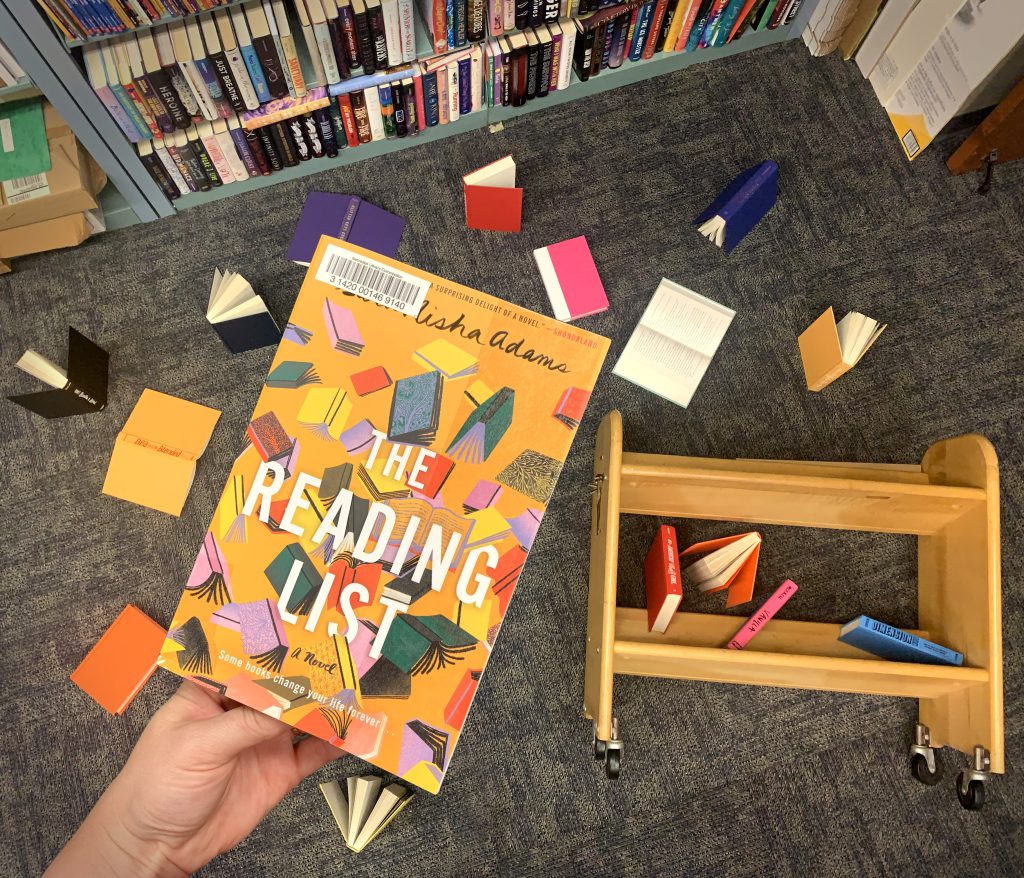
Maybe a little on the nose for a Book Club read but who cares, it was too good not to use for this week’s #BookFaceFriday. We have gotten several new titles in our Book Club Kit collection, just one being “The Reading List: A Novel” by Sara Nisha Adams (William Morrow Paperbacks, 2022.) You can find this title and all the new books available on our Book Club Kits page; just look in the Browse Options section and select the Browse New Additions link for our latest reads. It is also available as an e-book and audiobook on Nebraska Overdrive Libraries.
“This moving debut demonstrates the power of novels to provide comfort in the face of devastating loss and loneliness, with relatable characters and a heartwarming tone throughout. Readers who enjoyed Gabrielle Zevin’s The Storied Life of A.J. Fikry and Nina George’s The Little Paris Bookshop will find themselves drawn in by this book.”
– Booklist
Book Club Kits Rules for Use
- These kits can be checked out by the librarians of Nebraska libraries and media centers.
- Circulation times are flexible and will be based upon availability. There is no standard check-out time for book club kits.
- Please search the collection to select items you wish to borrow and use the REQUEST THIS KIT icon to borrow items.
- Contact the Information Desk at the Library Commission if you have any questions: by phone: 800/307-2665, or by email: Information Services Team
Love this #BookFace & reading? Check out our past #BookFaceFriday photos on the Nebraska Library Commission’s Facebook page!
Posted in Books & Reading, General
Tagged Book Club, Book Club Kits, bookfacefriday, libraries, Novel, Reading, Sara Nisha Adams, The Reading List
Leave a comment
Throwback Thursday: Group of Old Time Sidney Residents
Happy #ThrowbackThursday from Nebraska Memories!
This week, we have a 3″ x 4″ black and white photograph featuring a group of men in a park east of the Union Pacific Depot. Pictured left to right are: Karl Ziuquiten, Pat McMillan, Earl Durwell, Mike McFadden and Frank Uauth.
This image is published and owned by the Cheyenne County Historical Society. The historical photographs in this collection represent the people and places of Sidney, Fort Sidney, Potter, Dalton and other communities. See more from this collection on the Nebraska Memories archive.
Nebraska Memories is a cooperative project to digitize Nebraska-related historical and cultural heritage materials and make them available to researchers of all ages via the Internet. The Nebraska Memories archive is brought to you by the Nebraska Library Commission. If your institution is interested in participating in Nebraska Memories, see http://nlc.nebraska.gov/nebraskamemories/participation.aspx for more information.
#BookFaceFriday “Just Like That” by Gary D. Schmidt
Throw your hands in the air for #BookFaceFriday!
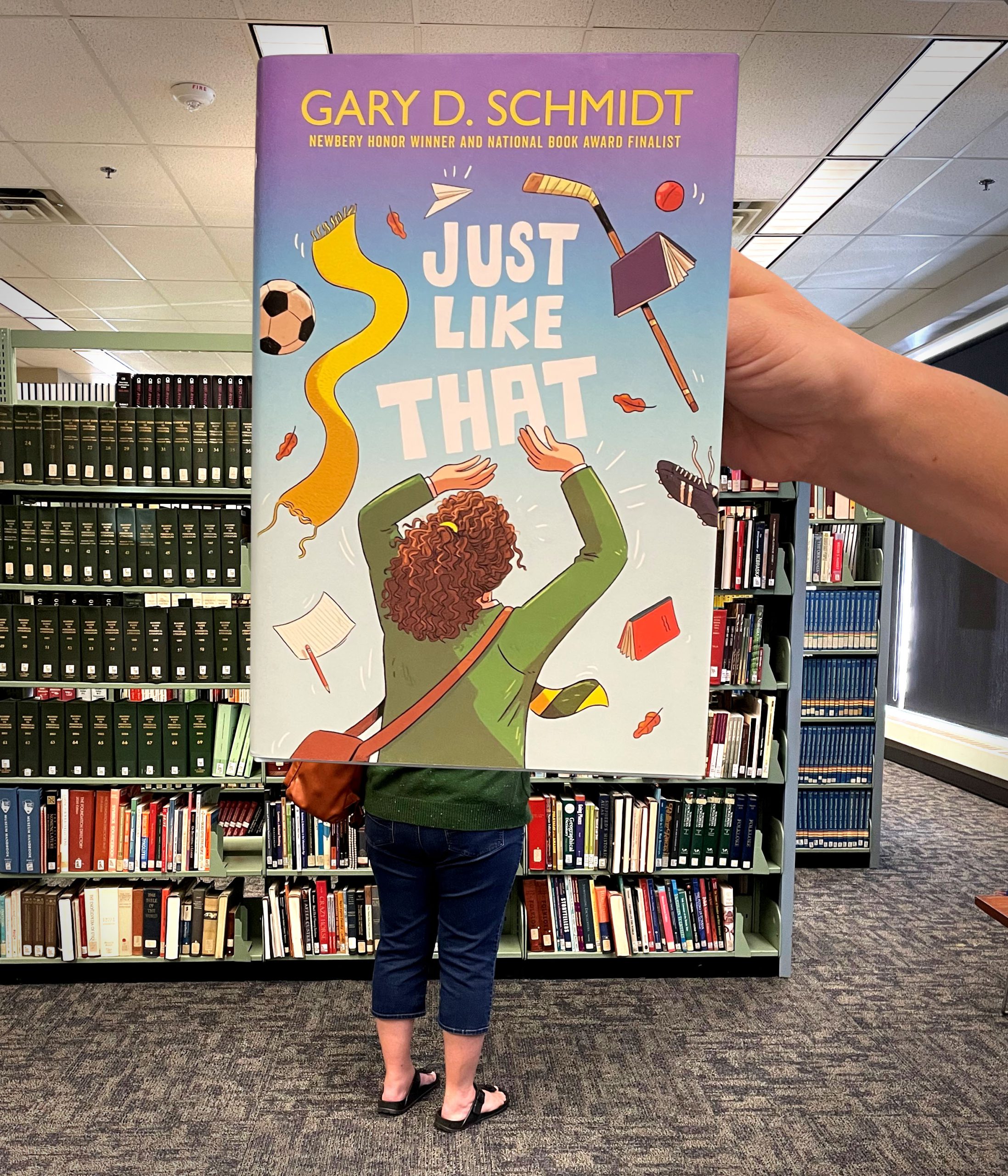 Check out this new book by Newbery Honor-winning writer Gary D. Schmidt! This week’s #BookFaceFriday! “Just Like That” (Clarion Books, 2021), follows a character we meet in Schmidt’s Wednesdays Wars, and like his other titles, expertly blends humor and tragedy. It is available to all Nebraska OverDrive Libraries in both ebook and Audiobook format, so no matter how your kid likes to read, this book is for you. We have eight Gary Schmidt titles in our OverDrive collection, and two titles available in our Book Club Kits collection.
Check out this new book by Newbery Honor-winning writer Gary D. Schmidt! This week’s #BookFaceFriday! “Just Like That” (Clarion Books, 2021), follows a character we meet in Schmidt’s Wednesdays Wars, and like his other titles, expertly blends humor and tragedy. It is available to all Nebraska OverDrive Libraries in both ebook and Audiobook format, so no matter how your kid likes to read, this book is for you. We have eight Gary Schmidt titles in our OverDrive collection, and two titles available in our Book Club Kits collection.
“Set in 1968, Just Like That is part of an outstanding series that began with Newbery Honor recipient The Wednesday Wars and continued in Okay for Now, a finalist for the National Book Award. While each book can be read separately, overlapping characters and themes enrich each other in understated and often profound ways. “Just Like That” is a riveting, award-worthy novel from a truly accomplished writer. Don’t miss it.” —BookPage
Find this title and many more through Nebraska OverDrive! Libraries participating in the Nebraska OverDrive Libraries Group currently have access to a shared and growing collection of digital downloadable audiobooks and eBooks. 190 libraries across the state share the Nebraska OverDrive collection of 21,696 audiobooks, 35,200 eBooks, and 3,964 magazines. As an added bonus it includes 130 podcasts that are always available with simultaneous use (SU), as well as SU ebooks and audiobook titles that publishers have made available for a limited time. If you’re a part of it, let your users know about this great title, and if you’re not a member yet, find more information about participating in Nebraska Overdrive Libraries!
This week’s #BookFaceFriday model is our Cataloging Librarian, Shoshana Patocka!
Love this #BookFace & reading? Check out our past #BookFaceFriday photos on the Nebraska Library Commission’s Facebook page!
Posted in Books & Reading, General, Youth Services
Tagged Book Art, Book Covers, bookface, bookfacefriday, books, Gary D. Schmidt, Just Like That, Nebraska OverDrive Libraries, OverDrive, Reading
1 Comment
Throwback Thursday: Elementary Students
This week’s #ThrowbackThursday is going back to school!
Union College and College View Elementary School was started by the College View Seventh-Day Adventist Church in 1900. The elementary school was jointly operated by the church and the college for many years as the Normal Department’s model school.
This 5″ x 3″ black and white photograph is owned and published by the Ella Johnson Crandall Memorial Library at Union College. The library at Union College is home to an archival collection of books, periodicals, audiovisual materials, photographs, artifacts, and manuscript collections related to the history of the college and the College View community. Photographs featured on the Nebraska Memories archive include early scenes of the college campus and downtown College View.
If you like history, check out the Nebraska Memories archive.
Nebraska Memories is a cooperative project to digitize Nebraska-related historical and cultural heritage materials and make them available to researchers of all ages via the Internet. The Nebraska Memories archive is brought to you by the Nebraska Library Commission.
If your institution is interested in participating in Nebraska Memories, see http://nlc.nebraska.gov/nebraskamemories/participation.aspx for more information!
Friday Reads: Troubled Blood by Robert Galbraith
I’ve been rereading the Cormoran Strike series by Robert Galbraith, in anticipation of the next book in the series. This is a tradition I have with this series and others, I love revisiting my favorite books. Right now I’m on the 5th book, “Troubled Blood.” I love the multidimensional characters that are both lovable but flawed, making them come to life for me. The combination of the personal lives and stories of the main characters and the professional pursuit of solving one major mystery in each book will keep readers invested in the story as the series continues. In Troubled Blood, the Strike Detective Agency is hired to look into a missing person’s case from 1974, and a trail that went cold decades ago. Without a body to even prove death or foul play, the possibilities of what happened to Margot Bamborough are seemingly endless. The search through old police files and the troubled mind of the original detective on the case will make their search for the truth even more difficult. This book and series are perfect for readers who love mysteries and procedural dramas. I highly recommend starting at the beginning with “The Cuckoo’s Calling,” for the full story.
Galbraith, Robert. Troubled Blood: A Cormoran Strike Novel. Mulholland Books. 2020.
Posted in Books & Reading, General
Tagged Book Review, Cormoran Strike, Friday Reads, mystery, Reading, Robert Galbraith, series, Troubled Blood
Leave a comment
#BookFaceFriday “Beauty Queens” by Libba Bray
Miss Congeniality has nothing on #BookFaceFriday!
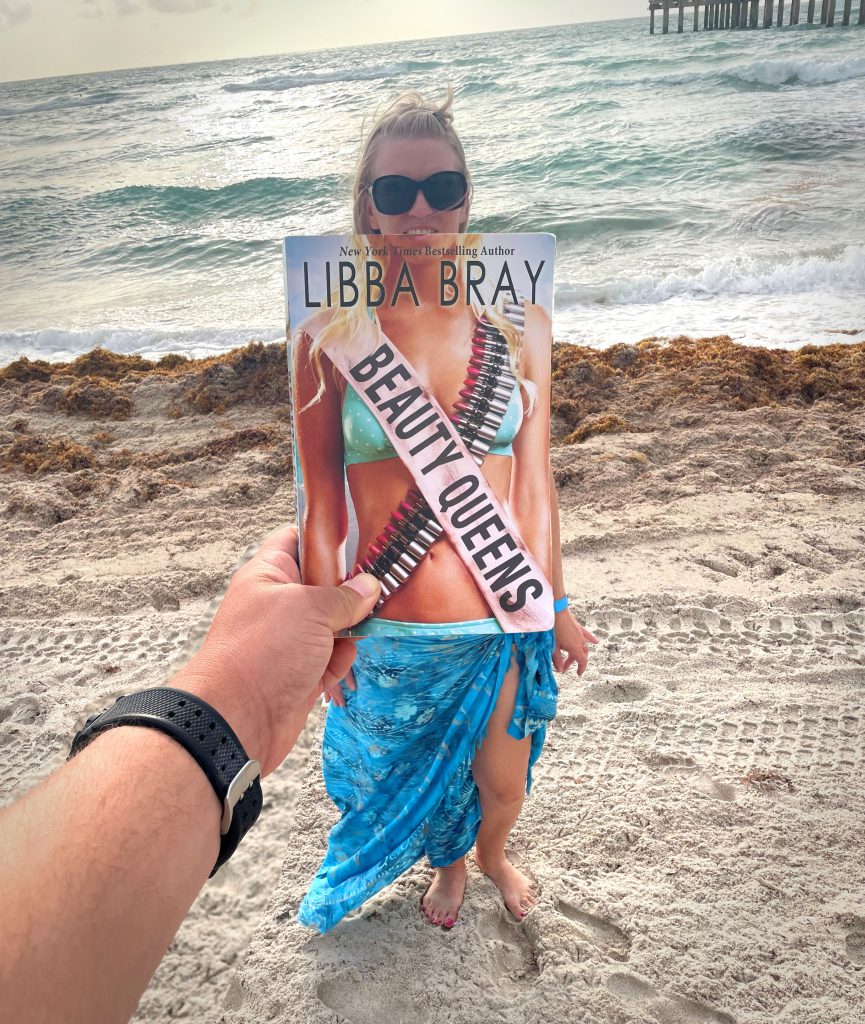
There she is, Miss America.. er I mean #BookFaceFriday! Don’t be a pageant mom with this week’s #BookFace, “Beauty Queens” by Libba Bray (Scholastic Inc., 2017.)
Bray is a New York Times bestselling author, you can find eight other Bray titles in our OverDrive collection, including, “A Great and Terrible Beauty,” “Going Bovine,” and “The Diviners.” We also have Bray’s “Going Bovine” available to readers in our Book Club Kit collection as well!“Whip-smart social commentary, surreal plot elements, and feminist themes come together in this bizarre and brilliant story… The empowering theme of self-acceptance and the affirming message that women should not underestimate themselves or others makes this novel a potentially life-changing book for budding feminists.”
– School Library Journal (starred review)
Find this title and many more through Nebraska OverDrive! Libraries participating in the Nebraska OverDrive Libraries Group currently have access to a shared and growing collection of digital downloadable audiobooks and eBooks. 188 libraries across the state share the Nebraska OverDrive collection of 21,696 audiobooks, 35,200 eBooks, and 3,964 magazines. As an added bonus it includes 130 podcasts that are always available with simultaneous use (SU), as well as SU ebooks and audiobook titles that publishers have made available for a limited time. If you’re a part of it, let your users know about this great title, and if you’re not a member yet, find more information about participating in Nebraska Overdrive Libraries!
Book Club Kits Rules for Use
- These kits can be checked out by the librarians of Nebraska libraries and media centers.
- Circulation times are flexible and will be based upon availability. There is no standard check-out time for book club kits.
- Please search the collection to select items you wish to borrow and use the REQUEST THIS KIT icon to borrow items.
- Contact the Information Desk at the Library Commission if you have any questions: by phone: 800/307-2665, or by email: Information Services Team
Love this #BookFace & reading? Check out our past #BookFaceFriday photos on the Nebraska Library Commission’s Facebook page!
Posted in Books & Reading, General
Tagged Beauty Queens, bookfacefriday, Libba Bray, libraries, Nebraska OverDrive Libraries, Reading
1 Comment
Throwback Thursday: Robin Hood Beer Truck
Happy #ThrowbackThursday from Nebraska Memories!
This week’s #throwback was taken on October 29, 1937. It features a refrigerated Robin Hood Beer truck. Robin Hood Beer was brewed by Fontenelle Brewing Company.
This image was taken by William Wentworth. He worked as a freelance and commercial photographer. His work provided a unique view of architecture, businesses, and community life in Omaha. This image is published and owned by The Durham Museum.
Check out this collection and more on the Nebraska Memories archive.
Nebraska Memories is a cooperative project to digitize Nebraska-related historical and cultural heritage materials and make them available to researchers of all ages via the Internet. The Nebraska Memories archive is brought to you by the Nebraska Library Commission. If your institution is interested in participating in Nebraska Memories, see http://nlc.nebraska.gov/nebraskamemories/participation.aspx for more information.
#BookFaceFriday: “My Antonia” by Willa Cather
O! #BookFaceFriday! 
“During that burning day when we were crossing Iowa, our talk kept returning to a central figure, a Bohemian girl whom we had both known long ago.”
This week’s #BookFace title comes from the collection “Nebraska Connections” on Nebraska OverDrive Libraries, it’s compiled from various end-of-the-year lists and has 167 eBooks and Audiobooks, including, “My Antonia” by Willa Cather (Random House Publishing Group, 2020.)
This Nebraska classic is available as an eBook and audiobook, along with many other Cather titles and nonfiction titles about the author and other Nebraskans. Explore the collection today and find your next read. The Nebraska Library Commission also offers a wide selection of Nebraska titles in our Book Club Kit Collection as well, you can find them all by browsing the “Nebraska-Related” section at http://nlc.nebraska.gov/ref/bookclub/.
Find this title and many more through Nebraska OverDrive! Libraries participating in the Nebraska OverDrive Libraries Group currently have access to a shared and growing collection of digital downloadable audiobooks and eBooks. 188 libraries across the state share the Nebraska OverDrive collection of 21,696 audiobooks, 35,200 eBooks, and 3,964 magazines. As an added bonus it includes 130 podcasts that are always available with simultaneous use (SU), as well as SU ebooks and audiobook titles that publishers have made available for a limited time. If you’re a part of it, let your users know about this great title, and if you’re not a member yet, find more information about participating in Nebraska Overdrive Libraries!
Love this #BookFace & reading? Check out our past #BookFaceFriday photos on the Nebraska Library Commission’s Facebook page!
United for Libraries Virtual 2022
There’s still time to register for United for Libraries Virtual 2022 Conference!
August 9-11th – Online
The Nebraska Library Commission has purchased a 2022 statewide registration for all Nebraska library board members, library directors and staff, Friends, and Foundations!
Keynotes:
- Libraries, Trustees, Friends, Foundations, and the DEI Revolution with James O . Rodgers and Laura L. Kangas (Live only; no recording)
- Library Workers are NOT Okay: How Trustees Can Support the Health & Well-Being of Library Staff
Sessions:
- Community Needs Assessment: Informing Library Goals and Strategy
- Diversity in Library Boards, Friend Groups, and Foundations: Successes and Struggles in Recruiting and Retaining Diverse Members
- Intellectual Freedom Challenges: How to Strengthen Your Library’s Response
- Our Collection & DEI: A Richmond Public Library Story
- Political Advocacy: The Most Important Kind of Fundraising
- Power Up Your Annual Fund Drive!
- Practical Policy Management: A Guide for Trustees
- Preparing for a Material Challenge
- Successful Bequest Fundraising: Planned Giving Lessons from the Field
- Tweeting to Congress: Library Social Media Advocacy
More details and registration here!
(No discount code or credit card needed to register. The system will recognize the Nebraska registration.)
Please contact Holli Duggan with any questions.
Throwback Thursday: Aftermath of Fire in Rising City
It’s time for another #ThrowbackThursday from Nebraska Memories!
This week’s 5″ x 3 1/2″ black and white photo shows the aftermath of the first major fire in Rising City, which happened on July 8, 1892. It occurred north of the railroad tracks on the east side of Main Street. Businesses such as F.M. Ross’s drug store, a brick hall, Mollie Newcomer’s millinery store, and Mrs. Gates’s furniture store were destroyed along with others. The town’s churches still stand in the background of this image.
This week’s #throwback is published and owned by the Rising City Community Library. The collection of photographs are currently displayed at the library. These images include photographs of businesses, portraits of the Rising family, and the major fire that took place.
Check out this collection and more on the Nebraska Memories archive.
Nebraska Memories is a cooperative project to digitize Nebraska-related historical and cultural heritage materials and make them available to researchers of all ages via the Internet. The Nebraska Memories archive is brought to you by the Nebraska Library Commission. If your institution is interested in participating in Nebraska Memories, see http://nlc.nebraska.gov/nebraskamemories/participation.aspx for more information.
What’s Up Doc? New State Agency Publications at the Nebraska Library Commission
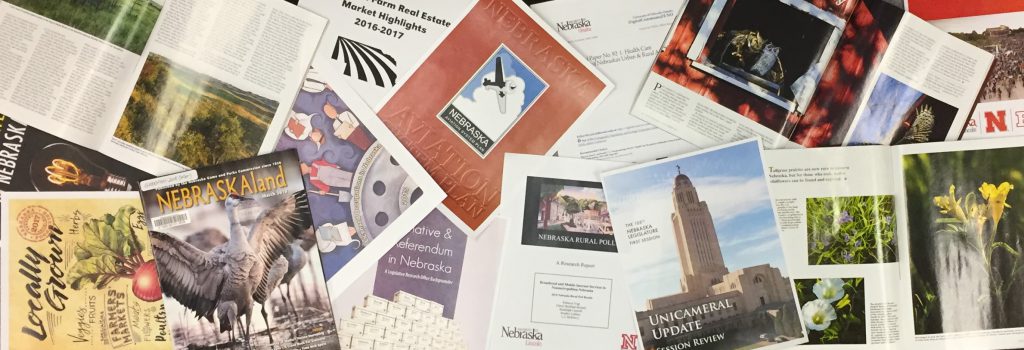
New state agency publications have been received at the Nebraska Library Commission for May and June 2022. Included are reports from the Nebraska Foster Care Review Office, the Nebraska State Patrol, the Nebraska Department of Health and Human Services, the Nebraska Judicial Branch, and new books from the University of Nebraska Press, to name a few.
Most items, except the books from the University of Nebraska Press, are available for immediate viewing and printing by clicking on the highlighted link above, or directly in the .pdf below. You can read synopses of the books received from the University of Nebraska Press in the Book Briefs blogposts.
The Nebraska Legislature created the Nebraska Publications Clearinghouse in 1972 as a service of the Nebraska Library Commission. Its purpose is to collect, preserve, and provide access to all public information published by Nebraska state agencies. By law (State Statutes 51-411 to 51-413) all Nebraska state agencies are required to submit their published documents to the Clearinghouse. For more information, visit the Nebraska Publications Clearinghouse page, contact Mary Sauers, Government Information Services Librarian; or contact Bonnie Henzel, State Documents Staff Assistant.
Book Briefs: New University of Nebraska Press Books at the Nebraska Publications Clearinghouse
The Nebraska Publications Clearinghouse receives documents every month from all Nebraska state agencies, including the University of Nebraska Press (UNP). Each month we will be showcasing the UNP books that the Clearinghouse has received.
UNP books, as well as all Nebraska state documents, are available for checkout by libraries and librarians for their patrons.
Here are the UNP books the Clearinghouse received in May and June, 2022:

A Frail Liberty : Probationary Citizens in the French and Haitian Revolutions, by Tessie P. Liu ; Series: France Overseas: Studies in Empire and Decolonization
A Frail Liberty traces the paradoxical actions of the first French abolitionist society, the Société des Amis des Noirs (Society of the Friends of Blacks), at the juncture of two unprecedented achievements of the revolutionary era: the extension of full rights of citizenship to qualifying free men of color in 1792 and the emancipation decree of 1794 that simultaneously declared the formerly enslaved to be citizens of France. This society helped form the revolution’s notion of color-blind equality yet did not protest the pro-slavery attack on the new citizens of France. Tessie P. Liu prioritizes the understanding of the elite insiders’ vision of equality as crucial to understanding this dualism.
By documenting the link between outright exclusion and political inclusion and emphasizing that a nation’s perceived qualifications for citizenship formulate a particular conception of racial equality, Liu argues that the treatment and status distinctions between free people of color and the formerly enslaved parallel the infamous divide between “active” and “passive” citizens. These two populations of colonial citizens with African ancestry then must be considered part of the normative operations of French citizenship at the time. Uniquely locating racial differentiation in the French and Haitian revolutions within the logic and structures of political representation, Liu deepens the conversation regarding race as a civic identity within democratic societies.

A Woman of Adventure : The Life and Times of First Lady Lou Henry Hoover, by Annette B. Dunlap.
When Lou Henry married Herbert Hoover in February 1899, she looked forward to a partnership of equality and a life of adventure. She could fire a rifle and sit a horse as well as any man. The Quaker community of Whittier, California, where she lived as a teen, reinforced the egalitarian spirit of her upbringing. But history had other ideas for Lou Henry Hoover.
For the first fifteen years of married life, Lou globe-trotted with her husband as he pursued a lucrative career in mining engineering and consulting. World War I not only changed the map of the world, it changed the map of the Hoovers’ marriage. Herbert Hoover’s Commission for the Relief of Belgium launched him into a political career that led to the White House. Lou, who detested the limelight, led a dual life: she supported her husband’s political career, managed their multiple households, and saw to the needs of their family. Behind the scenes, she pursued her own interests.
History has long since forgotten the breadth of her achievements, but Lou Henry Hoover’s powerful legacy endures in the ongoing success of the Girl Scouts, the music and physical therapy degree programs at Stanford University, athletic opportunities for women, and the countless unknown men and women who received an education thanks to Lou’s anonymous financial support.
Conveying Lou’s humor, personality, and intelligence, A Woman of Adventure takes a fresh look at the first lady who preceded Eleanor Roosevelt and her also-extraordinary accomplishments.

Cattle Beet Capital : Making Industrial Agriculture in Northern Colorado, by Michael Weeks.
In 1870 several hundred settlers arrived at a patch of land at the confluence of the South Platte and Cache la Poudre Rivers in Colorado Territory. Their planned agricultural community, which they named Greeley, was centered around small landholdings, shared irrigation, and a variety of market crops. One hundred years later, Greeley was the home of the world’s largest concentrated cattle-feeding operation, with the resources of an entire region directed toward manufacturing beef. How did that transformation happen? Cattle Beet Capital is animated by that question.
Expanding outward from Greeley to all of northern Colorado, Cattle Beet Capital shows how the beet sugar industry came to dominate the region in the early twentieth century through a reciprocal relationship with its growers that supported a healthy and sustainable agriculture while simultaneously exploiting tens of thousands of migrant laborers. Michael Weeks shows how the state provided much of the scaffolding for the industry in the form of tariffs and research that synchronized with the agendas of industry and large farmers. The transformations that led to commercial feedlots began during the 1930s as farmers replaced crop rotations and seasonal livestock operations with densely packed cattle pens, mono-cropped corn, and the products pouring out of agro-industrial labs and factories. Using the lens of the northern Colorado region, Cattle Beet Capital illuminates the historical processes that made our modern food systems.

Creek Internationalism in an Age of Revolution, 1763–1818, by James L. Hill ; Series: Borderlands and Transcultural Studies
Creek Internationalism in an Age of Revolution, 1763–1818 examines how Creek communities and their leaders remained viable geopolitical actors in the trans-Appalachian West well after the American Revolution. The Creeks pursued aggressive and far-reaching diplomacy between 1763 and 1818 to assert their territorial and political sovereignty while thwarting American efforts to establish control over the region. The United States and the Creeks fought to secure recognition from the powers of Europe that would guarantee political and territorial sovereignty: the Creeks fought to maintain their connections to the Atlantic world and preserve their central role in the geopolitics of the trans-Appalachian West, while the American colonies sought first to establish themselves as an independent nation, then to expand borders to secure diplomatic and commercial rights.
Creeks continued to forge useful ties with agents of European empires despite American attempts to circumscribe Creek contact with the outside world. The Creeks’ solicitation of trade and diplomatic channels with British and Spanish colonists in the West Indies, Canada, and various Gulf Coast outposts served key functions for defenders of local autonomy. Native peoples fought to preserve the geopolitical order that dominated the colonial era, making the trans-Appalachian West a kaleidoscope of sovereign peoples where negotiation prevailed. As a result, the United States lacked the ability to impose its will on its Indigenous neighbors, much like the European empires that had preceded them. Hill provides a significant revisionist history of Creek diplomacy and power that fills gaps within the broader study of the Atlantic world and early American history to show how Indigenous power thwarted European empires in North America.

Dirt Persuasion : Civic Environmental Populism and Heartland’s Pipeline Fight, by Derek Moscato.
Dirt Persuasion examines a watershed moment in U.S. environmental politics: the fight over the Keystone XL Pipeline. The complex interplay of resources extraction industries with grassroots environmentalism and advocacy has transformed the role of activists in the contemporary public sphere. Bold Nebraska’s years-long fight against pipeline company TransCanada provides a compelling case study: a contemporary state-level organization that simultaneously challenged political and business leaders in its home state of Nebraska, at the national level in the United States, and in the foreign jurisdiction of Canada.
Dirt Persuasion sheds light not only on the activism practices of social movements but also on the changing environments in which such actions are deployed. The KXL Pipeline fight represents a watershed moment both for U.S. energy politics and in the communication of environmental activism. The rural dimension of this environmental saga is critical: environmentalism must be understood from the perspective of the rural Americans who coexist with one of the planet’s most delicate ecologies. Populism, rhetorical appeals, strategic advocacy framing, and media framing all factor prominently within the pipeline debate—leading to a civic environmental persuasion built on the attributes of narrative, engagement, hyperlocalization, and bipartisanship in order to build broad stakeholder support and influence public policy.

Eye on the World : A Life in International Service, by Anthony C. E. Quainton.
Eye on the World is the autobiography of diplomat Anthony C. E. Quainton, the story of a long and varied life lived in eleven countries on six continents. Rather than a formal history, this is Quainton’s reflection on his interactions with the events of those times, beginning with George VI’s historic visit to North America in 1939, through the years of the Cold War, the efforts to contain and then defeat the Soviet Union, and finally the two decades of uneasy peace that came after the fall of the Berlin Wall. To some of these events Quainton was merely a spectator. In other areas—India, Nicaragua, Kuwait, and Peru—he was actively involved either as a participant in the policy process in Washington or as the senior representative of the United States in those countries.
Spanning his upbringing and education through two decades after his retirement, Quainton describes the expanding horizons of a middle-class boy from the northwest corner of North America as he encountered the complexity of the world in which he spent his professional life. Quainton served in seven different presidential appointments under presidents Gerald Ford, Jimmy Carter, Ronald Reagan, George H. W. Bush, and Bill Clinton. These included four ambassadorships in distinct parts of the world and three assistant secretary–level posts in Washington. This range of geographic and functional assignments was unique in his generation of Foreign Service officers.

In Praise of the Ancestors : Names, Identity, and Memory in Africa and the Americas, by Susan Elizabeth Ramirez ; Series: Borderlands and Transcultural Studies
Apart from collective memories of lived experiences, much of the modern world’s historical sense comes from written sources stored in the archives of the world, and some scholars in the not-so-distant past have described unlettered civilizations as “peoples without history.” In Praise of the Ancestors is a revisionist interpretation of early colonial accounts that reveal incongruities in accepted knowledge about three Native groups.
Susan Elizabeth Ramírez reevaluates three case studies of oral traditions using positional inheritance—a system in which names and titles are inherited from one generation by another and thereby contribute to the formation of collective memories and a group identity. Ramírez begins by examining positional inheritance and perpetual kinship among the Kazembes in central Africa from the eighteenth to the mid-twentieth centuries. Next, her analysis moves to the Native groups of the Iroquois Confederation and their practice of using names to memorialize remarkable leaders in the seventeenth and eighteenth centuries. Finally, Ramírez surveys naming practices of the Andeans, based on sixteenth-century manuscript sources and later testimonies found in Spanish and Andean archives, questioning colonial narratives by documenting the use of this alternative system of memory perpetuation, which was initially unrecognized by the Spaniards.
In the process of reexamining the histories of Native peoples on three continents, Ramírez broaches a wider issue: namely, understanding of the nature of knowledge as fundamental to understanding and evaluating the knowledge itself.

The Great Plains, 2nd ed., by Walter Prescott Webb.
This iconic description of the interaction between the vast central plains of the continent and the white Americans who moved there in the mid-nineteenth century has endured as one of the most influential, widely known, and controversial works in western history since its first publication in 1931. Arguing that “the Great Plains environment . . . constitutes a geographic unity whose influences have been so powerful as to put a characteristic mark upon everything that survives within its borders,” Walter Prescott Webb identifies the revolver, barbed wire, and the windmill as technological adaptations that facilitated Anglo conquest of the arid, treeless region. Webb draws on history, anthropology, geography, demographics, climatology, and economics in arguing that the 98th Meridian constitutes an institutional fault line at which “practically every institution that was carried across it was either broken and remade or else greatly altered.”
This new edition of one of the foundational works of western American history features an introduction by Great Plains historian Andrew R. Graybill and a new index and updated design.

Under Prairie Skies : The Plants and Native Peoples of the Northern Plains, by C. Thomas Shay.
In Under Prairie Skies, C. Thomas Shay asks and answers the question, What role did plants play in the lives of early inhabitants of the northern Great Plains? Since humans arrived at the end of the Ice Age, plants played important roles as Native peoples learned which were valuable foods, which held medicinal value, and which were best for crafts.
Incorporating Native voices, ethnobotanical studies, personal stories, and research techniques, Under Prairie Skies shows how, since the end of the Ice Age, plants have held a central place in the lives of Native peoples. Eventually some groups cultivated seed-bearing annuals and, later, fields of maize and other crops. Throughout history, their lives became linked with the land, both materially and spiritually.
**Pictures and Synopses courtesy of University of Nebraska Press.
#BookFaceFriday “When the Wind Came” by Jan Andrews
There’s no place like home with #BookFaceFriday!

We are embracing, or at least making use of, these windy Nebraska days for this week’s #BookFace! Life is not always rainbows and blue skies. While we know this is true for adults, we often forget it’s just as true for children. Books are an excellent way to broach hard topics, help kids understand trauma, and explore healing, just like in “When the Wind Came” written by Jan Andrews and illustrated by Dorothy Leung (Kids Can Press, 2022.)
“A powerful story about loss and healing told in simple text and pictures. Particularly relevant to students who have been through the trauma of any extreme event, weather or otherwise.” —Sue Morgan, School Library Journal
This title comes from our large collection of children’s and young adult books sent to us as review copies from book publishers. When our Children and Young Adult Library Services Coordinator, Sally Snyder, is done with them, the review copies are available for the Library System Directors to distribute to school and public libraries in their systems.
Love this #BookFace & reading? Check out our past #BookFaceFriday photos on the Nebraska Library Commission’s Facebook page!
Posted in Books & Reading, General, Youth Services
Tagged Book Covers, bookface, bookfacefriday, Childrens Books, Jan Andrews, Reading, When the Wind Came
Leave a comment
NLC Staff: Meet Mackenzie Marrow
Questions and answers with NLC’s Library Technician, Mackenzie Marrow. They began working with us in April 2022. Take a few minutes and get to know them better with a few fun questions!
What was the last thing you googled?
World video game hall of fame
What’s your ideal vacation?
Somewhere completely different —
different landscape, different people —
breaking away from the norm
What do you do to relax?
Read, play video games, listen to podcasts
Describe your first car
Volkswagen Cabriolet Convertible – for two weeks and then I got a 2006 Subaru Impreza
If I weren’t working in a library, I’d be…
Working with animals
What was the first concert you remember attending?
21 Pilots at the Bourbon Theater
What movie can you watch over and over again?
Three way tie: Big Eden, Pride and Prejudice (2005), Much Ado About Nothing (1993)
What was the last book you read?
Sula by Toni Morrison
What was the last movie you watched?
Starship Troopers (1997)
What is a quote that you live by?
“Icarus laughed as he fell”
What smell brings back great memories?
The smell of coffee on a cold day
If you could have one superpower, what would it be?
Teleportation, so I can visit all my friends who live far away
What’s the last thing you do before you go to bed?
Turn on my humidifier and a podcast at a low volume
If you had a warning label, what would it say?
Gets confused easily
Do you have any tattoos?
No, but if the right opportunity were to arise, I might get one
What is your favorite comfort food when you are sick?
Popcorn and ice cream
What’s your most treasured possession?
A stuffed animal I got when I was born, Ting-Ting. It belonged to my brother but now it is mine
What posters did you have on your wall as a kid?
No posters but when I was in college, I had video game posters
Do you love or hate rollercoasters?
I love a vintage wooden rollercoaster
Do you have any pets?
An eleven year old cat named Mittens
Favorite technology that you could not live without
My phone and video games
If you could get rid of one holiday, which one would you abolish?
Halloween
If you could only eat one kind of food for the rest of your life, what would it be?
Bread
If you could call anyone in the world and have a one-hour conversation, who would you call?
Jane Goodall
What do you get every time you go to the grocery store?
Bananas
Posted in General, Public Relations
Tagged Mackenzie Marrow, Nebraska Library Commission Staff, NLC Staff, Q and A, Staff
Leave a comment
Throwback Thursday: Burlington Northern Freedom Train
All aboard for this week’s #ThrowbackThursday!
This week, we have a 4″ x 4″ color photograph of the Freedom Train stopped in McCook, Nebraska in 1975.
This photograph is owned by the High Plains Historical Society and Museum. It is published by McCook Public Library. Images in this collection document early growth of the Chicago, Burlington & Quincy Railroad in McCook and the surrounding area.
See all the materials in this collection on the Nebraska Memories archive!
Nebraska Memories is a cooperative project to digitize Nebraska-related historical and cultural heritage materials and make them available to researchers of all ages via the Internet. The Nebraska Memories archive is brought to you by the Nebraska Library Commission.
If your institution is interested in participating in Nebraska Memories, see http://nlc.nebraska.gov/nebraskamemories/participation.aspx for more information.
Friday Reads: Hound of the Sea: Wild Man. Wild Waves. Wild Wisdom.
NOTE: I wrote this draft in 2017, and shelved it. With the recent (2021) release of the HBO documentary, 100 Foot Wave, I’ve revived it.
There aren’t a lot of books written about surfers, and certainly not a lot of books about surfers in my local library. Some of the books are clearly written primarily by the co-authors, and come across as literary braggadocios that are mostly turn-offs. At the least, they run counter to a more modest surfer code. So after starting but not finishing a couple of these, I then picked up Hound of the Sea: Wild Man. Wild Waves. Wild Wisdom, written by big wave surfer Garrett McNamara (GMac) and Karen Karbo. It is a worthy effort, and only a little bit of braggadocio, coming across as a seemingly honest portrayal of GMac’s childhood (which is interesting even without the surfing), rise among the surfing circuits, and his eventual record setting big wave rides.
I had originally wanted something about surfing legend Kelly Slater, arguably the most dominant athlete in his sport, or even any sport, as illustrated by this fantastic infographic. Some facts worth extrication: GOAT Slater has won more world titles than any athlete in any major sport, holds the record for being both the youngest and oldest surfer to win a title (20 and 40), and Kelly has won more titles than the next 3 surfers combined. I also found Slater’s clean living lifestyle of particular interest. But, my public library only had a couple of kid’s books about Mr. Kelly, so I turned to the big wave surfers. Big wave surfing is of interest in its own right, whereby the surfer is towed by a jet ski into waves that are at least 20 feet high, and often much larger. GMac held the world record for largest wave surfed (subsequently eclipsed since I wrote this in 2017), and while the images and video in the aforementioned link are impressive, the size of these waves is somewhat relative. Not to diminish the accomplishment, as it is truly impressive, but relative in the sense that many other big wave surfers have feats that are just as impressive due to a differing set of factors (e.g. barrels, reefs, etc.)
Where this biography succeeds is in telling the story of GMac’s childhood, relationship with his family and fellow surfer brother (Liam McNamara), the surf culture in Hawai’i (GMac settled on the North Shore of Oahu), and his passion for the sport and culture. It fails in that, while not outright braggadocios, it does seem like self-promotion and certainly at times like fortune cookie philosophy.
McNamara, Garrett and Karbo, Karen. Hound of the Sea: Wild Man. Wild Waves. Wild Wisdom. New York: Harper Wave. 2016.
